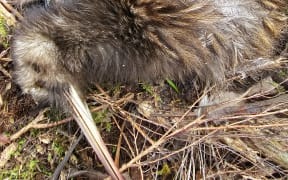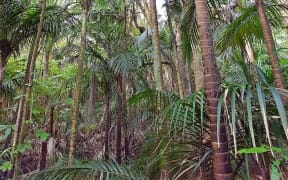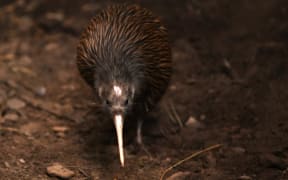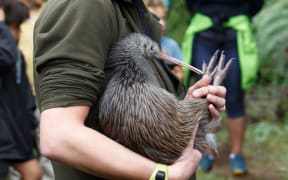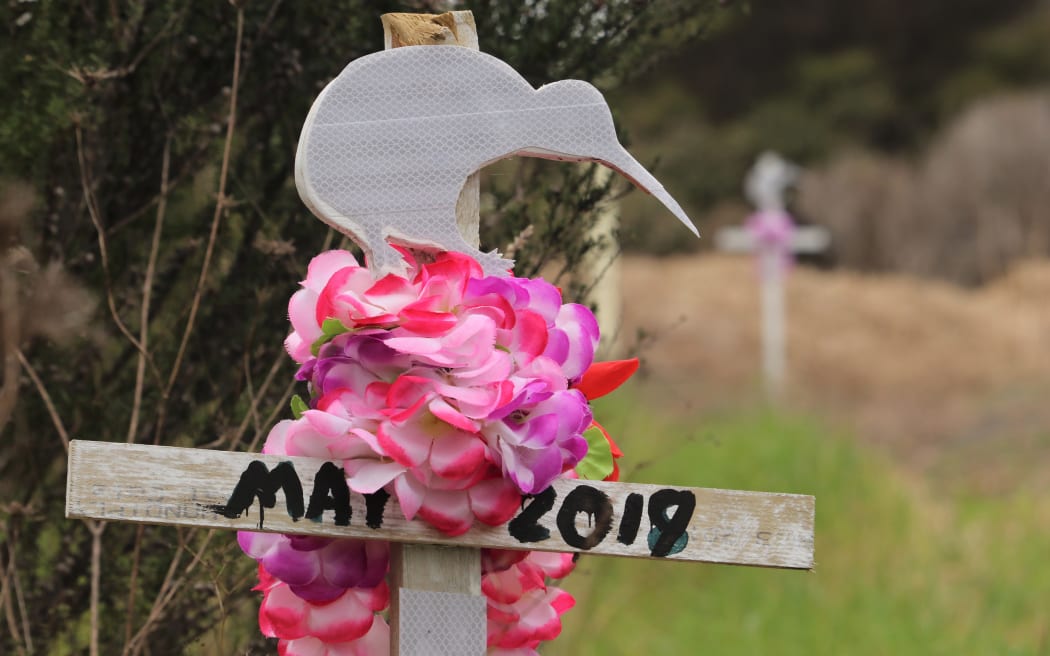
In Rangitane, near Kerikeri, local residents place roadside crosses where kiwi have been killed by cars. Photo: RNZ / Peter de Graaf
The number of kiwi killed by dogs in the Bay of Islands has increased sharply this year, figures obtained by RNZ show.
Since 2022, just under 90 kiwi deaths have been reported across Northland, with cars and wandering dogs the main culprits.
While Department of Conservation (DOC) figures show the number killed by cars has remained steady, deaths attributed to dog attacks in the Bay of Islands increased from three in 2022 to 12 between 1 January and 11 August this year.
That number jumps to 19 if another seven suspected dog-related deaths are included, most of which have occurred in Ōpua Forest, near Paihia, since July.
DOC said it did not include those seven deaths in its official tally because they were still being investigated and could lead to prosecution.
The number of kiwi confirmed or suspected of being killed by cars in the Bay of Islands was 10 in 2022 and 11 in the current year to 11 August.
In the Whangārei district, the number killed by dogs was three in 2022 and the same so far in 2023. The numbers killed by vehicle strike were five and four, respectively.
DOC said the true numbers were likely to be higher, because the official figure only included deaths reported to the DOC or discovered by rangers.
Many more deaths were likely to go unreported or undiscovered in the bush.
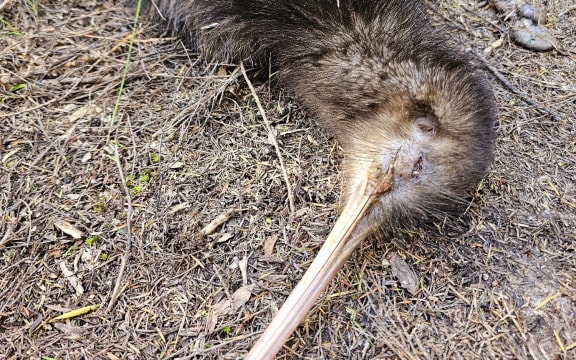
Six kiwi found dead in Ōpua Forest had injuries consistent with being gripped in a dog's jaws. Photo: Bay Bush Action
That was backed up by Lesley Baigent, Far North coordinator for conservation group Kiwi Coast, who said DOC's figures "severely under-represented" the problem.
She knew of three deaths on her road in rural Kaitāia alone - two of which had been confirmed as being caused by dogs - that did not show up in the official statistics.
Baigent said it was not clear why dog attacks on kiwi seemed to occur in spates, like those near Paihia or the three on her road.
"Whether we just get a dog that's really focussed on them and comes out every night and goes hard, I don't know. It doesn't seem to be a time of year thing. They're random but they seem to be in clusters."
However, she said dogs and kiwi could co-exist, and all it took was responsibility and a little effort on the part of pet owners.
Baigent said she owned dogs but also had kiwi calling outside her bedroom window every night.
She kept her dogs safe in runs and walked them on leads when needed.
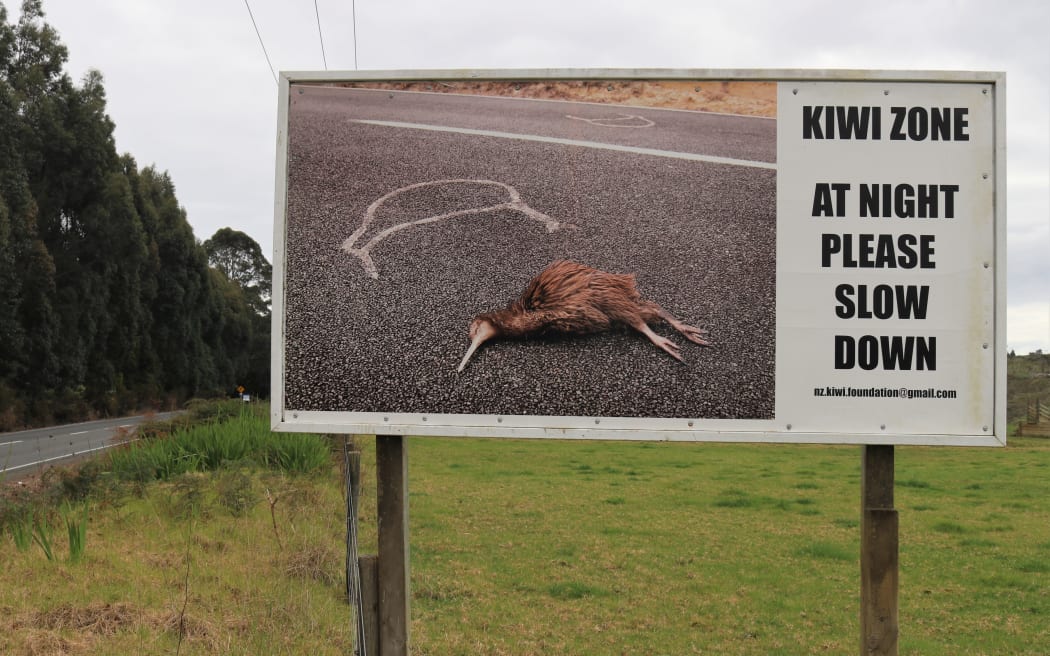
A billboard near Kerikeri reminds motorists to look out for kiwi at night. Photo: RNZ / Peter de Graaf
"If we, as dog owners, can lift our game and be prepared to be responsible, read our dog, understand them, and perhaps not put them in those tempting situations, we can have dogs and kiwi. We absolutely can," Baigent said.
"You just know where your dog is at all times. You put it on a lead if you think there's a risk. We've got kiwi in the culverts on our driveway, under the road where we walk every morning. It's like, 'We know where you are, we're not going to let our dogs even have a look'.
"We can have both dogs and kiwi. And how lucky is that? It just takes a bit more effort. And all it takes is one person in your area to not do that and you have no kiwi left."
Baigent said different types of dog required different approaches. Hunting and working dogs were offered avoidance training, which tried to teach them to ignore the scent of kiwi.
For owners of pet dogs, Kiwi Coast was instead offering a series of free "Know Your Dog" workshops.
Baigent said some owners did not know a lot about dog behaviour, or realise that some breeds now kept for their appearance were originally bred as bird dogs. The courses aimed to help owners understand what they had at the end of their leads.
"They're incredibly driven by their nose. It's just a fantastic sense organ. It blows your mind when you realise what a dog can smell," Baigent said.
"You do get an indication when a bird is close by from the dog's reaction. As long as you can read that reaction, and have a plan of how to deal with it, birds can be safe."
According to DOC's figures, of the 87 deaths since 2022, 61 were recorded in the Far North district.
Another 24 deaths were recorded in the Whangārei district and just one each in the Kaitāia and Kauri Coast (Dargaville) areas. Across the region and the full time period, the total number of kiwi confirmed or suspected of being killed by cars was 31.
The number killed by confirmed or suspected dog attacks was 23 - or 30 if the Ōpua Forest deaths were counted. The cause of death of 22 birds could not be determined while a ferret was suspected in two of the Whangārei deaths.
The figures, which were obtained under the Official Information Act, highlighted a number of hotspots apart from Ōpua Forest.
They were Purerua Peninsula in the northern Bay of Islands, in particular Hansen Road; the Rangitane/Ōpito Bay area near Kerikeri, and Whangārei Heads. All three areas have high kiwi populations.
The figures suggest dogs were the main danger to kiwi on the Purerua Peninsula, while in Rangitane, cars were responsible for eight of the 10 reported fatalities.
Dog attacks also occurred on Cape Brett Track, near Russell, and Skyline Road, in Waitangi Forest near Kerikeri.
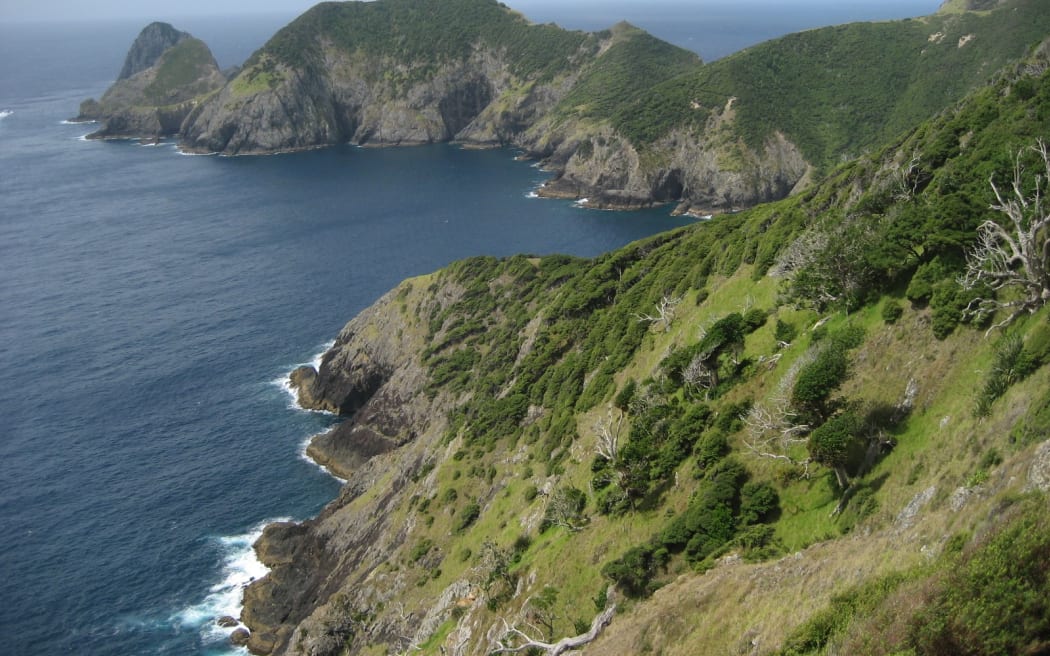
Three kiwi were killed by dogs on the track to Cape Brett, near Rāwhiti in the Bay of Islands. Photo: RNZ / Peter de Graaf
DOC operations support acting director Eamonn Whitham said the data had significant limitations because not all kiwi deaths would be reported or discovered.
"Many kiwi deaths resulting from predator and human activity are not reported to the department, and many more are never discovered. Kiwi deaths resulting from vehicles are the most reported as they are more visible to the public," Whitham said.
"As attacks by dogs, ferrets, stoats and cats generally occur away from human activity and observation it is difficult to get a true picture. As a result, the database does not include all kiwi deaths, and there may be further records held by groups and other agencies outside of the department."
Whitham said kiwi died from a variety of causes, including predator attacks, vehicle strike, being caught in traps, and natural causes such as misadventure, disease and health issues.
In many cases, the cause of death was obvious and in others the cause was only suspected. Key indicators included the location of the body and bite marks. The cause of some deaths was unknown because the bodies were too decomposed when found.
Kiwi deaths in Northland hit the headlines last month when six of the strictly protected birds were killed by wandering dogs near Paihia, in an area under intensive pest control by conservation group Bay Bush Action.
Kiwi Coast has previously stated that, despite such setbacks, overall kiwi conservation in Northland was a success story. While the national kiwi population is declining by about 2 percent a year, Northland numbers were increasing.
The group has put that down to the growth of community-led pest control operations and, in most places for most of the time, good dog control.
Last year, Purerua Peninsula, where a major pest control programme was underway, set a record for the highest kiwi call count ever recorded in New Zealand.
